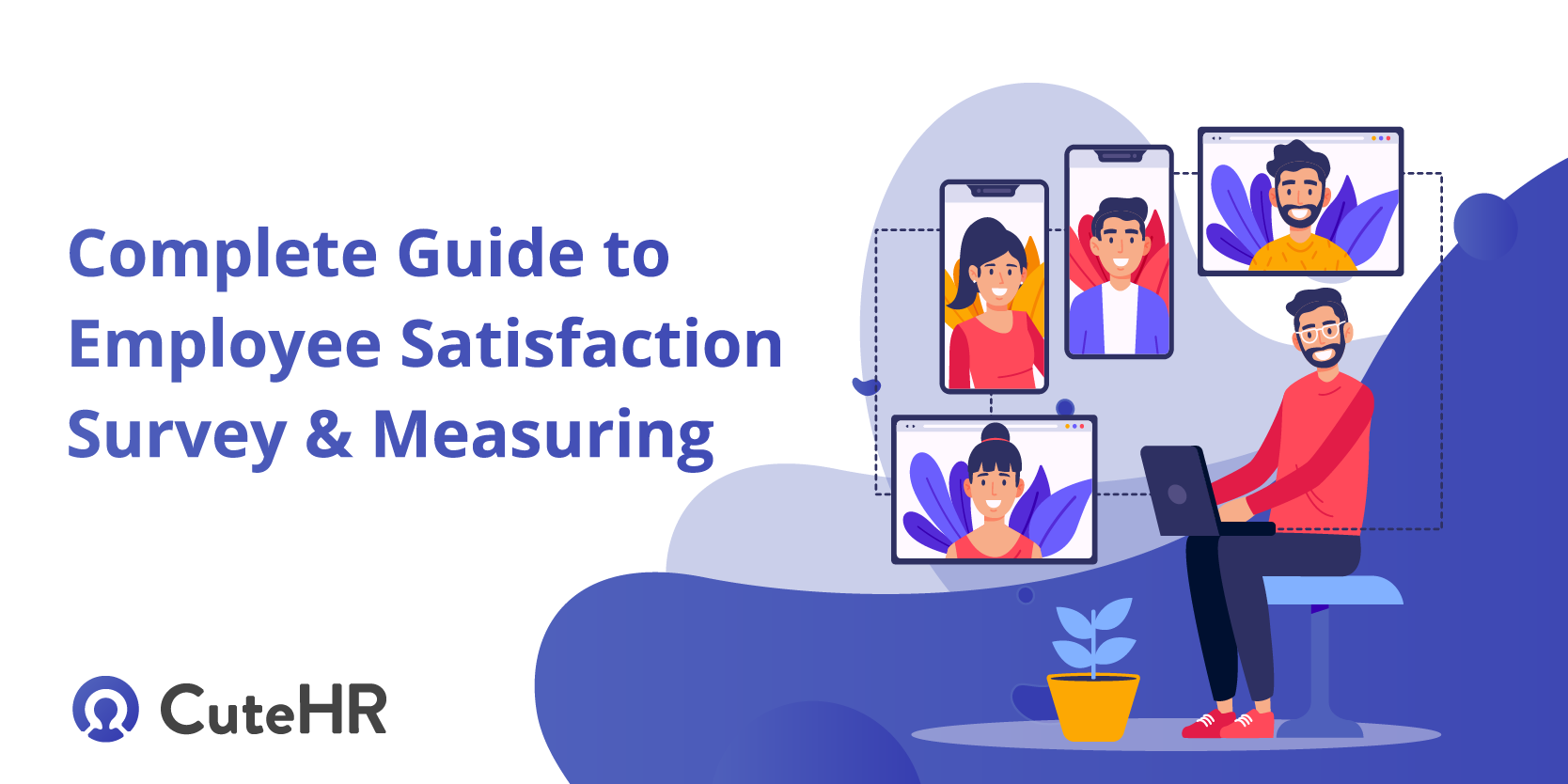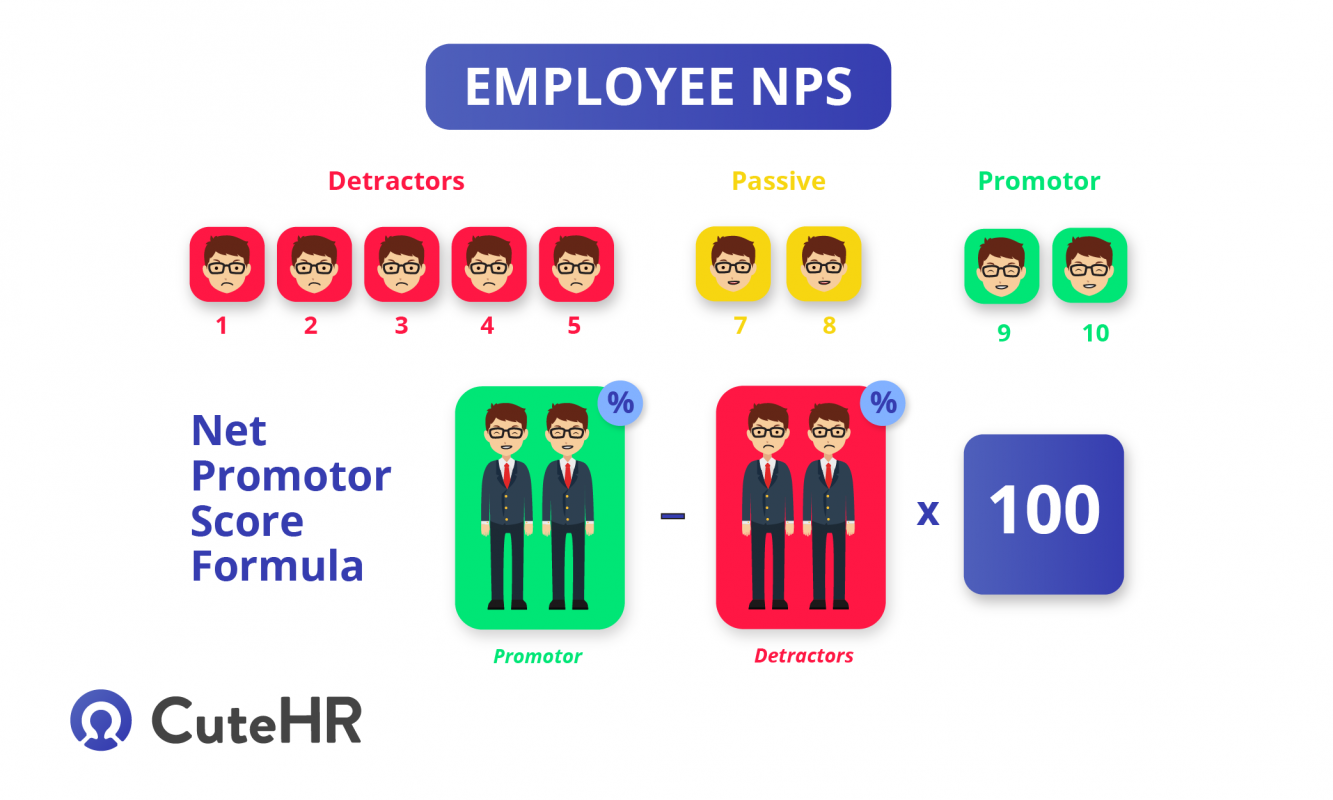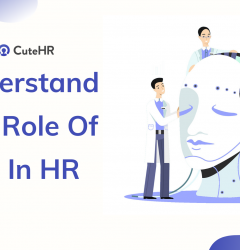04 Aug

Employees Attitude at work is a prominent factor that defines the overall morale and culture of the company. Gone are the times when employees were mere resources to meet end goals. An employee is an important asset today and his well-being is an equal measure of the company’s well-being. Therefore conducting an employee satisfaction survey and measuring it is important for building a better workplace.
Everyone talks about building a relationship with your customers. I think you build one with your employees first.
Angela Ahrendts (Senior Vice President, Apple)
Table of Contents
What is meant by Employee Satisfaction?
Job satisfaction or employee satisfaction is a measure of contentment relative to the emotional or mental state of mind about their job. Whether or not they like the job or specific aspects of jobs, such as the nature of work or supervision.
Job satisfaction depends on several determinants such as satisfaction with pay, promotion opportunities, fringe benefits, job security, relationship with co-workers and supervisors, etc. Job satisfaction can further be differentiated as cognitive or affective.
Difference between cognitive and affective employee satisfaction
Cognitive: Cognitive Satisfaction refers to rational satisfaction over specific facets of the job e.g. monthly payment terms, job responsibilities, opportunities to grow and learning, perks and benefits, etc. It is the combination of more rational and objective factors that determines one’s involvement and satisfaction at work.
Affective: Affective satisfaction is the aggregation of pleasurable emotions and feelings associated with the job and how it is perceived to be placed in the individual’s life. It defines how an employee feels about working in a certain environment as to how comfortable he is with the prevailing work culture.
Also often used interchangeably, Employee Satisfaction and employee engagement are relatively different concepts. Employee Engagement is something that happens when workers are committed to helping their company achieve all of their goals whereas Employee Satisfaction defines the mental and emotional state of the employee at work and how well he is enjoying his work. An engaged employee is satisfied with his job but the reverse may not always hold.
What are the advantages of measuring Employee Satisfaction?
Happy employees make organizations happy places to work. Tracking Employee Satisfaction at regular intervals helps you to evaluate the overall health of the organization. Here are the advantages of measuring Employee Satisfaction:
Reduce Turnover
Employee Retention is a key area of concern for any organization. It becomes difficult to retain good employees if they feel undervalued or dissatisfied at work. A regular check to ensure a positive work environment and address the challenges can help you retain good talent for a long haul.
Improved Brand image
When work satisfaction goes up, employees become undesignated brand promoters. The social branding of the company changes and helps to attract talent and investors alike.
Culture of Open Communication
Open and fair communication builds strong organizations. When employees are allowed to share constructive feedback and communicate openly, crucial areas of improvement gets notified and addressed.
So it is important to allow such fair conversations on regular intervals to avoid critical issues being pushed to negative grapevine communication.
Boosts Productivity
Happy and satisfied employees focus on creating value results for the company. Measuring employee satisfaction can give you the necessary data and insights to target initiatives for boosting workforce productivity and for measuring the effectiveness of those initiatives over a while.
Theory of employee satisfaction measurement.
Before we understand the various methods of reviewing Employee Satisfaction Survey, another important dimension to look at employee satisfaction is the theory of independent determinants highlighted as:
The two-factor theory (also known as Herzberg’s motivation-hygiene theory and dual-factor theory):
According to this theory, there are certain factors at the workplace that leads to employee satisfaction while various others that cause dissatisfaction, all of which are independent of each other and hence must be dealt with differently. This proposes that satisfaction and dissatisfaction are not on a continuum with one increasing as the other diminishes, but are independent.
Two-factor theory distinguishes between;
- Motivators
- Maintenance factors
Motivators: This includes challenging work, recognition, responsibility, opportunity to do something meaningful, involvement in decision making, etc. that give positive satisfaction, through intrinsic conditions of the job itself, such as recognition, achievement, or personal growth.
Maintenance factors: This includes status, job security, salary, fringe benefits, work conditions, good pay, paid insurance, and vacations, etc. that do not give positive satisfaction or lead to higher motivation, though dissatisfaction results from their absence.
Now that we have read the various benefits the company can achieve through structured Employee Satisfaction Recordings, and the various differentiating factors that lead to Job Satisfaction, the next step is to identify the various approaches that measure Employee satisfaction.
Different Approaches to Measuring Employee Satisfaction
There are majorly two popular methods to measure Employee Satisfaction. Both the methods are quantifiable means of evaluating and tracking Employee satisfaction, yet both have their pros and cons. Let’s study them in detail.
Employee Net Promoter Score (eNPS)
This is a concept built around evaluating employee’s loyalty and is a measure that indicates how willing are your employees to recommend their workplace to their family or friends.
The Score is based on answering a simple question on a scale of zero (0) to Ten (10):
“How likely are you to recommend your company as a place of work to your friends? “
Based on responses to this question on a scale of one to ten, employees are segmented as:
Promoters
(Those who responded with a score between 9-10) are the most loyal segment and will enthusiastically recommend working with the company. These are the real brand ambassadors and are your strongest assets.
Passive
(Those who responded with a score between 6-8) are the neutral segment. They may not shout out loud promoting your company but are not the ones who will talk negative. These are your target employees who can be converted to be promoters.
Detractors
(Those who responded with a score between 0-5) are the negative influencers. These are the set of employees who are completely dissatisfied and are either planning to leave the company or are negatively influencing others.
To find your company’s eNPS (Employee Net Promoter Score), you subtract the percentage of detractors from the percentage of promoters to get a score somewhere between 100 and -100. Any score above Zero is considered good.
Further, responses must be kept anonymous to gather the most honest and real feedback. The employee Net Promoter question should also be combined with additional surveys to understand what factors contribute to the eNPS scores.

These surveys should be based on various parameters like leadership, Culture, ethics, growth, training, communication, rewards, compensations, etc.
It is important to conduct eNPS at least quarterly or twice a year to understand the gaps and address them to boost Employee Satisfaction.
Employee Satisfaction Surveys
Employee Satisfaction Survey is a powerful and detailed survey that Human Resource Managers use to understand the level of satisfaction of the employees. The Employee satisfaction survey help employers measure and understand their employees’ attitudes, feedback, level of motivation, and eventually job satisfaction.
You have more freedom to choose which questions to include and structure it as per your organization’s framework. With all the customization to serve your organization’s needs, Employee surveys are lengthy processes with high volumes of data to analyze. The questions in Employee Surveys can relate to the various functional area like Inclusion, Engagement, Company culture, Compensation, Financial benefits, Personal growth, Health benefits, Career development, Work environment, Team performance to name a few.
Tips to construct a robust Employee Satisfaction Survey
Here are a few tips to construct a robust Employee Survey:
- Keep it simple and easy to comprehend.
- Be specific about the information that you wish to seek.
- Create objectivity in questions rather than making them emotionally driven.
- Keep the parameters holistic yet consistent to gauge changes in response over a while.
- Avoid negative questions or questions leading to some obvious responses.
- Keep questions that allow further actions to post-survey.
What are the Best Employee Satisfaction Survey Questions?
Let us look at some of the best employee satisfaction survey questions that you can’t afford to miss in adding to your survey.

- Do you understand the clear and strategic objectives of the business, company or the project in which he/she is deployed?
- Are your role and contributions clear in meeting the goals and demand of the business?
- Do you believe there are good opportunity and growth available in the company for you?
- Working for next 2 year for the organization is a good idea for you?
- Are you overall satisfied with your job?
- Do you feel proud of being a part of the team?
- Do you get inspired by your team members?
- Getting support for any issue is easy when you work in the team?
- How happy are you in making a decision? Do you feel having enough freedom in making quick decisions?
- Does the company inform you about all the resources and tools to perform your work?
- Do your organisation’s seniors and manager help you with resolving issues?
- Do you feel that you are rewarded well and the company has a good employee appreciation programme?
You can use these most important employee satisfaction survey questions to identify employee satisfaction.
How to use Employee Satisfaction survey Data?
What is the next stage with all the data recorded through scoring and surveys? All said and done, nothing is more frustrating for employees than being listened but not heard. Devising an action plan after the creation of data surveys is a critical part of achieving the final objective. There are a few pointers to keep in mind to ensure the success behind the Employee Satisfaction Survey.
Build An Action Plan
You can start by analyzing and comparing data with previous years or with other peer companies to know how your organization is fairing.
Also, study how the Employee Satisfaction Survey has been received by the employees and if there is any negativity or criticism around it. Build action points around the surveys that can deal and resolve the trigger issues. The trends in the reviews shared can help you create a concrete action plan and execute them.
Instil the Culture of Feedback System
A culture of feedback instils faith and respect between the employees. It is difficult to address every complaint of the employees, but it is essential to make them feel that you are hearing their issues and are committed to foster positive changes and resolve the gaps.
If you are an employee and your company says, ‘Tell us how you feel about working with us?’ And then does nothing about the feedback you share, you are not going to be very likely to tell them how you feel the next time the company asks. Additionally, it will build distrust and negativity against the system.
Keep a strong network of managers and leaders to have a feedback loop. An easy way to achieve this is to have a regular one on one meeting between managers and employees. It provides employees with a platform to share their goals and discuss career progression plans.
Also, conduct regular Performance Reviews to reflect upon individual employee’s performance which can also give some structured insights and suggestions.
Remain aligned to the core values of the Company
The eNPS (Employee Net Promoter Score) and Satisfaction Surveys can help you assess the policies, culture, and benefits that you are offering to the employees. All feedback is sometimes not worth accepting. Be judicious and ensure that the feedback and responses you receive are aligned with the goals and objectives of the company at large and are not just ways to meet some objectives of any standalone department or function.
Maintain Transparent and Open Communication
You should be transparent and fair in conveying what the results of the surveys are. When employees know they are being heard, they are more likely to continue sharing during your next employee satisfaction assessment.
Make sure you highlight the key areas of concern to the entire team and the way it is planned to be resolved.
Conclusion
Happy Workplaces foster productivity and quality at work. Any good leader wants their employees to be happy and satisfied, but it is difficult to gauge how satisfied employees are without regular and consistent feedback.
To improve, you need input and insights from your employees and follow-through from HR and leadership teams. Whether you opt for the tried-and-tested Employee Net Promoter Scoring system or create an employee satisfaction survey specific to your organization culture, turning that information and feedback into action will help you raise your scores high, increase positive feedback, and create an incredible place to work for your employees.
All this ultimately helps build an indispensable talent pool in your organization that is motivated to create value addition for your company.













Jyoti Kapoor